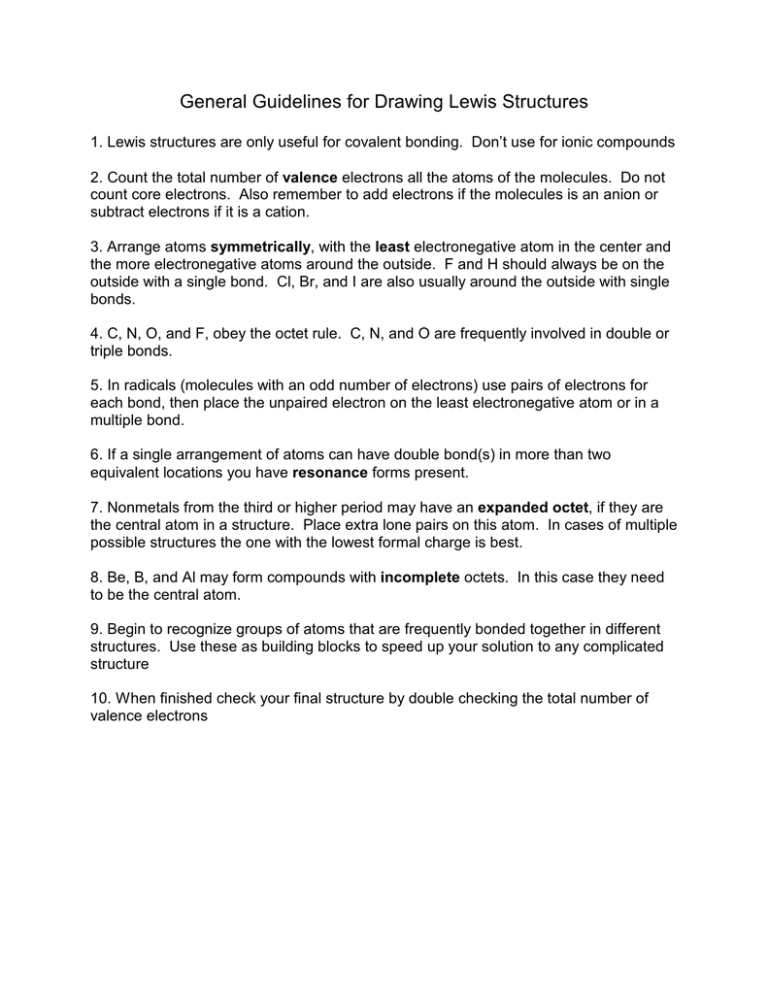General Guidelines for Drawing Lewis Structures
advertisement

General Guidelines for Drawing Lewis Structures 1. Lewis structures are only useful for covalent bonding. Don’t use for ionic compounds 2. Count the total number of valence electrons all the atoms of the molecules. Do not count core electrons. Also remember to add electrons if the molecules is an anion or subtract electrons if it is a cation. 3. Arrange atoms symmetrically, with the least electronegative atom in the center and the more electronegative atoms around the outside. F and H should always be on the outside with a single bond. Cl, Br, and I are also usually around the outside with single bonds. 4. C, N, O, and F, obey the octet rule. C, N, and O are frequently involved in double or triple bonds. 5. In radicals (molecules with an odd number of electrons) use pairs of electrons for each bond, then place the unpaired electron on the least electronegative atom or in a multiple bond. 6. If a single arrangement of atoms can have double bond(s) in more than two equivalent locations you have resonance forms present. 7. Nonmetals from the third or higher period may have an expanded octet, if they are the central atom in a structure. Place extra lone pairs on this atom. In cases of multiple possible structures the one with the lowest formal charge is best. 8. Be, B, and Al may form compounds with incomplete octets. In this case they need to be the central atom. 9. Begin to recognize groups of atoms that are frequently bonded together in different structures. Use these as building blocks to speed up your solution to any complicated structure 10. When finished check your final structure by double checking the total number of valence electrons








